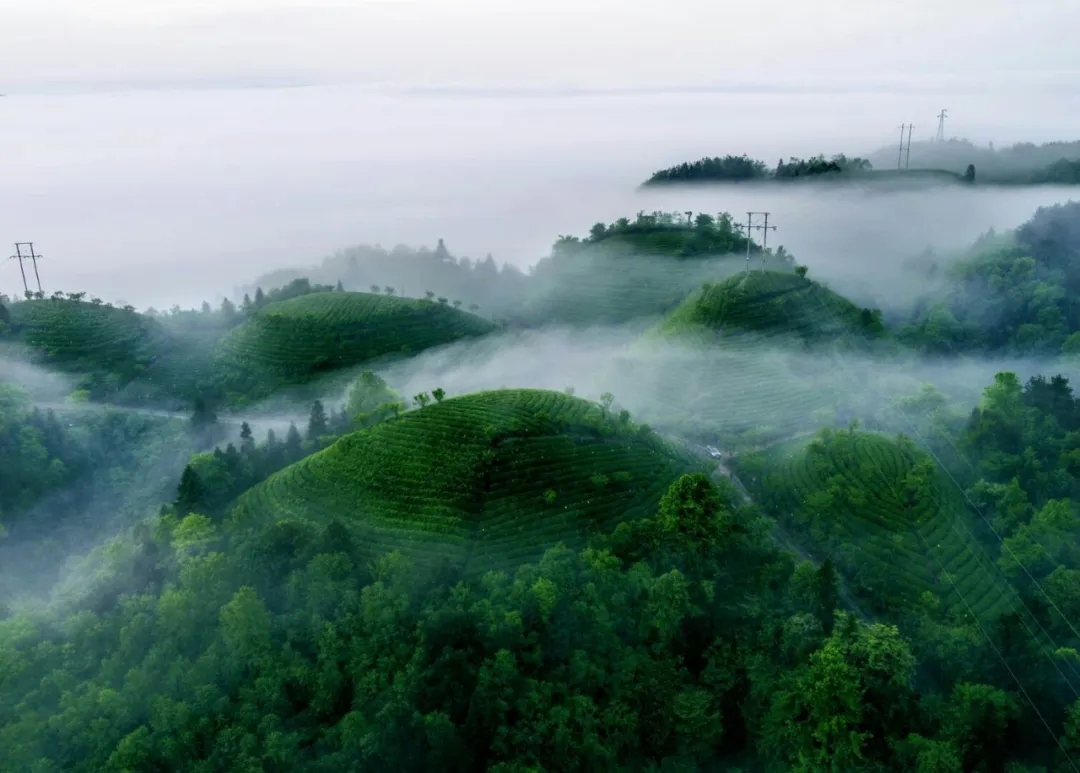Within the context of China’s total exports, the country retained 87% of its total tea production in 2019.
● 366,600 metric tons (13%) were exported
● 83% of that export volume was green tea
2019年,中国茶叶生产总量的87%用于内销,13%用于出口,出口总量36.66万吨,其中83%是绿茶。

China’s green tea goes across the globe. A whopping 20%, or about 75 thousand metric tons, of China’s tea exports, go to Morocco. Morocco purchases vast quantities of green tea for both domestic consumption and re-export and by far the largest single importing country of Chinese green tea. The popularity of Moroccan mint green tea is the dominant contributing factor. The US takes a much smaller share of export volume, usually around 4% per year. In terms of dollar value, the US ranks number 6 – 8 on the list of China tea buying countries. Canada receives less than 0.5% of China’s tea exports. It is worth noting, however, that these numbers do not necessarily reflect the actual amount of Chinese tea in these countries’ markets. The US and Canada import packaged, blended, and flavored green teas from non-producing countries that can include Chinese green tea.
中国的绿茶遍布全球。中国绿茶出口总量的20%(约7.5万吨)是出口至摩洛哥。摩洛哥购买大量的绿茶用于国内消费和再出口,是迄今为止中国绿茶的最大进口国。薄荷绿茶的普及是促使摩洛哥大量进口绿茶的主要因素。出口到美国的中国绿茶份额要小得多,通常每年约为4%。受美元汇率因素的影响,美国在中国茶叶购买名单中排名第6-8位。出口到加拿大的绿茶占比低于0.5%,然而,值得注意的是,这些数字并不一定反映中国绿茶在这些国家市场上的实际数量。美国和加拿大从非茶叶生产国进口包装茶、调配茶和调味茶,这些茶中也包括中国绿茶。
CHINA GREEN TEA PRODUCTION
The last five years have shown China continues to increase its production of all teas, including greens. Green tea production grew 5% from 2017 to 2019 alone. In 2019, China reported producing 2.8 million metric tons of tea, a 19% increase from 2015. Breaking that production down by tea type results in:
● 63.5% green tea
● 13.5% dark tea
● 11.0% black tea
● 9.9% wulong (oolong) tea
● 1.3% white tea
● 0.3% yellow tea
过去五年,中国的茶叶产量持续增长,包括绿茶。仅从2017年到2019年,中国绿茶产量增长5%。2019年,中国茶叶总产量近280万吨,比2015年增长19%。各茶类占比如下:绿茶63.5%,黑茶13.5%,红茶11%,乌龙茶9.9%,白茶1.3%,黄茶0.3%。

China has about 16 provinces that each produce over ten thousand metric tons of tea. Still, the top 3 provinces (Fujian, Yunnan, and Hubei) contribute a combined total of 41% of the nation’s tea. These provinces provide significant portions of green tea but do so on varying scales based on the types of tea those provinces produce. For example, Yunnan Province has ranked number 3 on the list of green tea producing provinces, but only 45.8% of its total annual production is green tea. Zhejiang Province ranks number 4 on the list of green tea provinces, but about 92% of its tea production is green tea.
中国大约有16个省的茶叶产量超过一万吨。尽管如此,排名前三的省份(福建、云南和湖北)所产茶叶合计占全国茶叶生产总量的41%。这些省份生产了大量的绿茶,但根据所产绿茶种类的不同,其规模也有所差异。例如,云南省在绿茶生产省份中排名第三,但绿茶仅占其年产量的45.8%;浙江省在绿茶生产省份中排名第四,但其生产茶叶的92%都是绿茶。